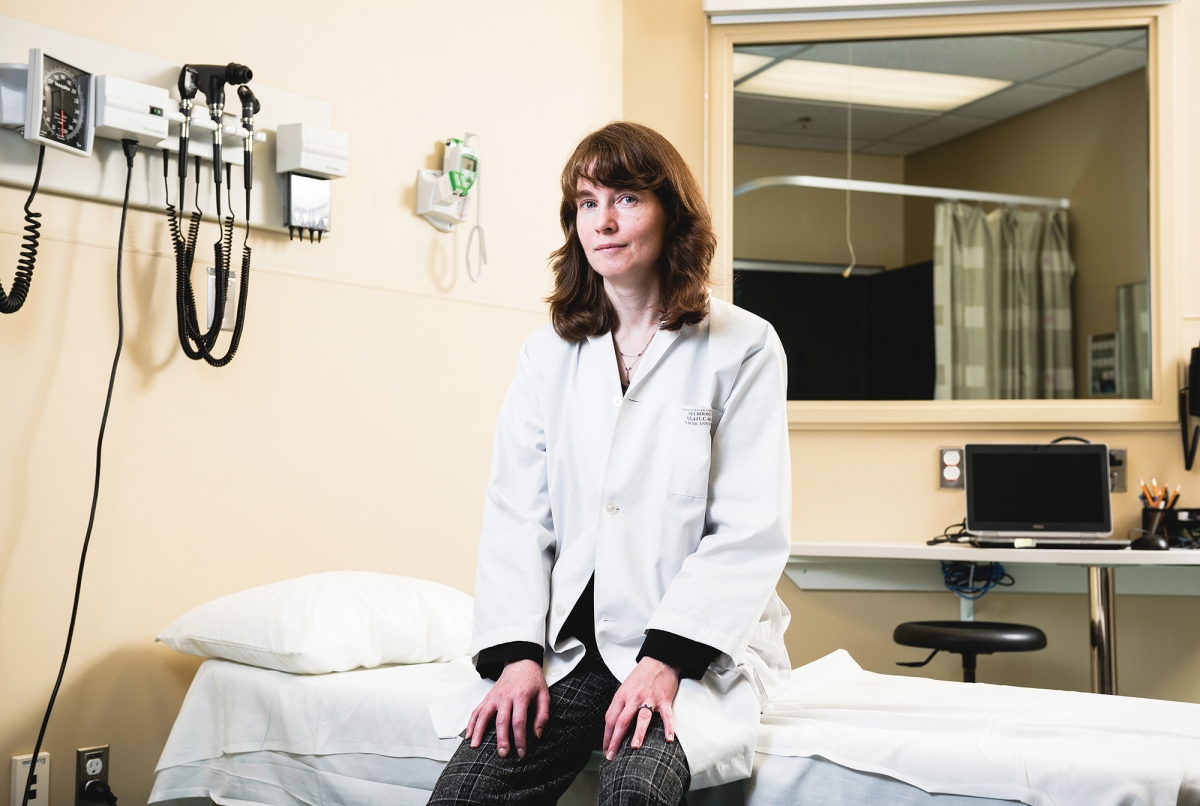
Medical Mystery
Her right eye failed her first. Its every movement wrought pain. Mysteriously, that passed, but then depression crept up on the mother of two boys and she grew weary. As years went on, she increasingly visited hospitals. Arthritis. Inflamed bowels. Eye pain, again. Her leg began hurting too, and soon it rebelled: first spasms, then a complete dereliction of duty—it no longer obeyed her. Seven years after her eye first stung, she clumsily limped to her doctor to learn she has multiple sclerosis.
She carries the hallmarks of many MS patients: predominantly female, aged 20 to 50, living far from the equator and suffering other health conditions. Such comorbidity is of particular interest to UM researcher Dr. Ruth Ann Marrie (above).
Marrie is the inaugural holder of the Waugh Family Chair in Multiple Sclerosis, created in 2016 thanks to a $2-million gift from the Waugh Family Foundation to investigate the causes of MS and improve the quality of life for the 100,000 Canadians living with this disease of the central nervous system. Canada, particularly the Prairies, has the highest prevalence of MS in the world.
In 2019, after analyzing reams of anonymous health records kept at UM’s Manitoba Centre for Health Policy, Marrie discovered that upwards of 10 years before an MS diagnosis, depression and anxiety developed in many patients. (She saw the pattern among those later diagnosed with rheumatoid arthritis and inflammatory bowel disease, too.) And each ailment propels MS’s progression.
“The findings were pretty consistent across, so that makes me think there’s some biology behind it, such as inflammation,” the professor of internal medicine says. “If we can figure out why these comorbid conditions occur, we might be able to do something in terms of prevention or better understanding the disease…. The emergence of these conditions long before MS is diagnosed also raises the possibility that we might at some point be able to identify people who are destined to be diagnosed with MS earlier in their disease process.”
Then doctors could intervene before patients develop more serious neurological symptoms, and perhaps treatments would be more effective, she adds.
As older readers know, every year degrades our body’s function in new ways, so the adults Marrie examined had a lot of “noise” in their data. What ailments are actually significant?
Children may prove key to understanding the variables. In a preliminary study, Marrie and her colleagues noticed the year before Ontario children presented with their first symptoms of MS, their use of the health-care system spiked. Intrigued, they now want to look further back to see what trends they can find, and compare to adults. Perhaps there is a telltale oddity hiding in this data, one that artificial intelligence may soon spot with ease. But for now, sorting through this data will take time, and Marrie is grateful her Chair enables her to pursue this.
“I got into the field before I knew many people with MS, but now many people with MS have come into my life,” she says. “You don’t have to be involved in this environment for very long before you really care a lot. You want to change things.”







Good luck in your search.
Look for pathogens in the brain. Spirochetes, parasites, etc.